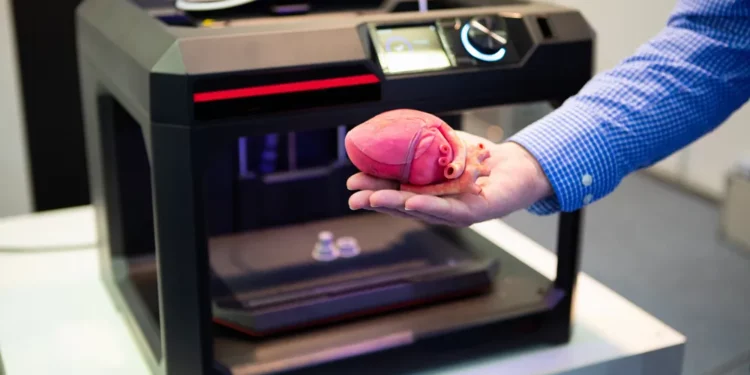Alginate tissue engineering is an evolving field that strives on manufacturing artificial tissue and organ alternatives as eternal solutions to substitute or restore the damage.
Owing to organ depreciation and inadequate organ donors worldwide, several patients are left in dire need of tissues and organs in cases of critical injuries, genetic conditions, and illnesses. Numerous patients are visited by death before these transplants are accessible.
Biomedical engineers are striving to develop 3D temporary organs, dubbed scaffolds, that might aid in regenerating damaged tissues and possibly lead to designing artificial organs. These tissues can also be utilized in several engineering tenders, like nerve recuperation in structures fabricated from biomaterials.
Alginate tissue printing
Around 22.6 million patients need neurosurgical interferences every year across the globe to restore the damage present in the peripheral nervous system. This impairment is chiefly caused by distressing events like violence, motorcycle accidents, difficult births, or workplace injuries. It is expected that the expense of global nerve recuperation and restoration will reach over USD 400 million by 2025.
Surgical techniques available at present allow surgeons to restructure nerve endings and motivate nerve growth. However, the possibility of recuperation in the impaired nervous system is not definite, and the reappearance function is seldom finished.
Studies and experiments on rats have revealed that if damage abolishes over 2 centimeters of nerves, the gap cannot be bridged effectively and may produce the loss of muscle purpose or feeling. In this situation, it is essential to utilize a scaffold to attach two sides of the impaired nerve, especially in case of big nerve wounds.
3D bioprinting prints three-dimensional layers, one on top of another, like 3D printers. The outcome is a spongy alginate tissue that is fabricated from the recipient’s neural cells and a biomaterial to attach to the injured nerve. Substances like alginate (from algae) are perfectly suited as the human system accepts it.
Whilst this method has not yet been applied to people, once perfected, it can aid patients waiting for organs and tissues.
Challenges associated with Alginate tissue
Alginate, which is derived from algae is a difficult material to mold as it disintegrates easily during the process of 3D printing. University of Saskatchewan researchers are still developing novel techniques to enhance its printability.
For nerve recuperation, alginate has preferable properties for live-cell growth and functioning, however, its poor 3D printability marginally limits its construction. This means that alginate flows easily during the printing procedure, and emerges as a distorted structure. Researchers at the University of Saskatchewan have developed a construction method wherein cells are encompassed within a spongy alginate tissue that is designed with a 3D printer.
Early researchers used molding methodologies to fabricate large alginate devoid of a porous constitution to enhance nerve recuperation and regeneration. Cells do not favor a solid atmosphere; however, 3D printing a spongy alginate tissue is difficult and often next to impossible.
Therefore, researchers at the University of Saskatchewan found that printing a spongy structure made by alginate layer-by-layer is a better alternative than that of a molded large alginate. The former structure has interlinked pores and facilitates a cell-friendly ecosystem. Cells can freely communicate with one another and begin to regenerate whilst the 3D printed alginate underpins as a temporary backing for them.
Researchers at the University of Saskatchewan are advancing the operation of 3D printed structures for patients who endure nerve damages alongside other impairments.
Post the implantation of the constructed alginate tissue in a patient, the big query is the stability to deal with the strain applied by body tissues. Researchers at the University of Saskatchewan have developed a numerical model to estimate the comportment of alginate tissues.
University of Saskatchewan studies will aid to comprehend cell response, which is the main element to consider whilst assessing the success of the alginate tissues.

















